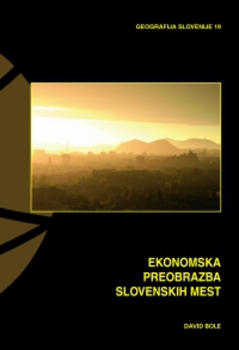Ekonomska preobrazba slovenskih mest
The economic transition in Slovenia has undoubtedly led to major changes in Slovene urban landscape. The political transition in the 1990-ies was only the beginning of other fundamental processes that followed: the socialistic economic system started collapsing, new markets emerged and cities were exposed to global socioeconomic forces. Slovene cities were and still are at the forefront of the mentioned change. Major spatial, cultural, social and other transformations as results of the economic transition can be seen and felt by citizens, workers and visitors.
A theoretical framework of the economic transition was based upon the paradigm of postfordism. The paradigm can sufficiently explain the economic transition and its main results – the deindustrialisation and tertiarisation of urban space. Empirical findings of the socioeconomic structure of the Slovene urban system support the post-fordist paradigm since it has experienced a sharp deindustrialisation and a consecutive tertiarisation in the past two decades. An empirical analysis of the Slovene urban system was accomplished with the use of complex multivariate statistical and classification methods and its final result was a typification of Slovene cities according to the fordist/post-fordist regime of accumulation. The Slovene urban system is characterised by industrial (neofordistic) small cities on the one hand and polyfunctional large tertiary cities on the other.
On the micro spatial level the city/region of Ljubljana was examined to identify the main spatial characteristics and changes caused by the economic transformation in the past 20 years. Detection of two main spatial processes was discussed: centripetal and centrifugal economic forces in the city. The centrifugal forces are stronger since suburbanized areas in the city region are gaining economic functions. A visible outcome can be seen in the formation of new suburban »edge« business zones, shopping centres and secondary office zones. But the centripetal forces are also notable especially in the city centre, which is gaining certain new functions. New forms of economic activities are shaping the spatial structure in the compact city, such as cultural industry and leisure activities. The end result of this economic restructuring is in the new economic geography of the city region of Ljubljana, which is marked by the fragmentation, specialisation and deconcentration of economic activities.
These urban changes should be considered when new strategic spatial plans are to be developed. Polycentricism in the urban region is one possible solution to alleviate the emerging unsustainable spatial patterns that are a direct outcome of the economic transition.
Downloads

Series
License

This work is licensed under a Creative Commons Attribution-NonCommercial-NoDerivatives 4.0 International License.
